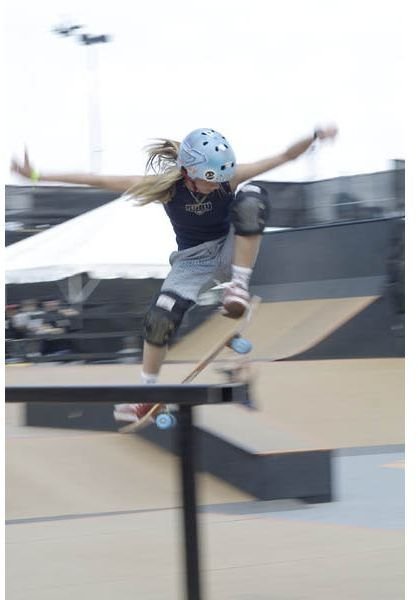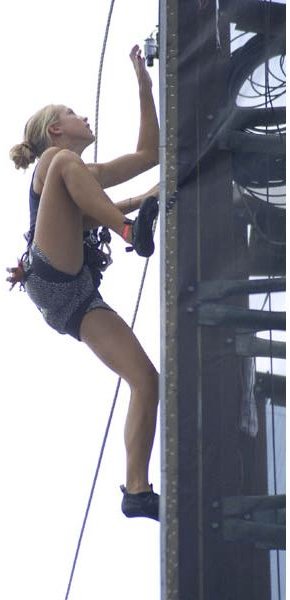Action Photography Tips - How to Take Better Pictures by Freezing Action or Blurring It in Your Photos
Capturing Peak Action in Your Photos
An important consideration in showing action is capturing the moment when the movement is at its peak. This means timing the photo for when the athlete is fully extended or at the peak of their leap. For example, when photographing a tennis player hitting a serve, you would be trying to capture the athlete fully extended with the ball poised just on or before the racket.
There are two primary ways of handling movement, depending on what you’re hoping to accomplish. These are freezing movement and showing movement. Each has its uses and each is worth considering depending on the circumstances. Let’s look at each.


Freezing Action
This is probably the most common approach. Here the photograph tries to stop movement either via a fast shutter speed or through the use of flash. Depending on what you’re photographing and what direction it’s moving in, you may have to opt for faster and faster shutter speeds. A good starting point is a minimum of 1/250th for moderate movement by a human being. A shutter speed of 1/500th or faster for sports such as track and field and others is necessary with 1/1000th being an even better choice. Faster speeds are necessary for moving vehicles (1/1000th or faster, much faster for auto racing for instance). Keep in mind, you can use a slower shutter speed when something is moving perpendicular to you rather than coming towards you.
Flash can also be used to stop movement, but things can get a little bit trickier when you rely on it to freeze motion. Shoe mount flash units freeze motion because the burst of light from the flash is so brief (often 1/1000th of a second or faster) that even with a shutter speed of 1/60th or so, most of the exposure is from the light from the flash and not from the ambient light. Keep in mind though, if the shutter speed is slow enough, ambient light will help additional movement register on the image producing what’s known as a “ghost” effect. Some flash units can even work in what’s known in some form of high speed shutter sync. What the flash unit does in this situation is fire a series of brief bursts of light rather than a continuous burst as it normally would. This lets you shoot at a much higher shutter speed than the camera normally can. Part of the decision making process though is asking yourself the question, do you really want to completely freeze everything?
Blurring Action
Sometimes the best choice is to choose a shutter speed that freezes the subject’s face and body, but lets hands and feet (or even more) blur to give a sense of movement. This is a more difficult technique than just trying freeze movement since the difference between an effective shutter speed that causes the desired amount of blur and the wrong shutter speed is very small. Still, that’s one of the beauties of digital photography, you can review and delete, or just take extra shots to improve your chances of being successful. What shutter speed to try is dependent upon what you’re shooting.
There are some things you can do to help improve your chances of success. One of these is to shoot with a wide angle lens (telephoto lenses magnify camera shake at slower shutter speeds). Another is to mount the camera on a tripod or monopod (to avoid blur from camera shake) with a longer lens. A favorite technique is to pan the camera while following the moving subject to help keep the subject fairly sharp while blurring everything else.
Remember, it takes a lot of effort to do a good job of documenting action. Pro shooters take hundreds, sometimes thousands of images when covering an event. Capturing peak action is a challenging but rewarding part of digital photography.
